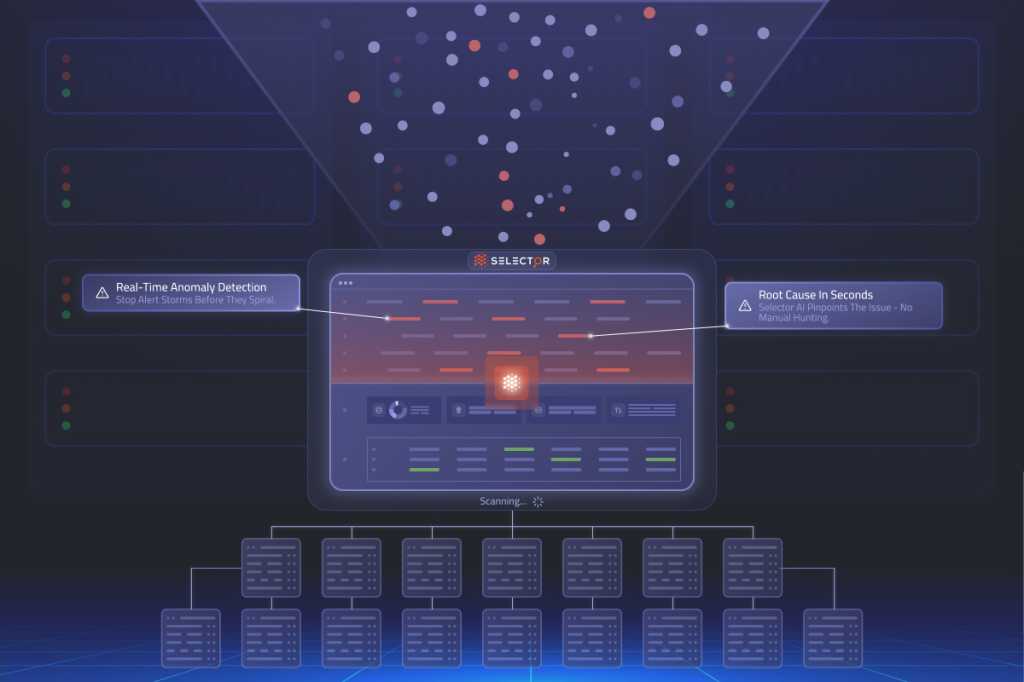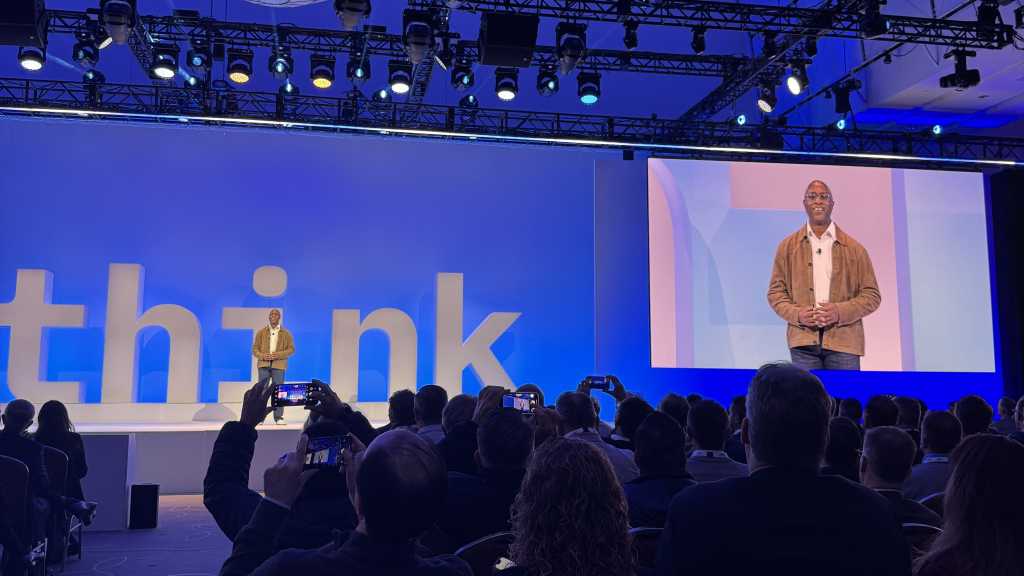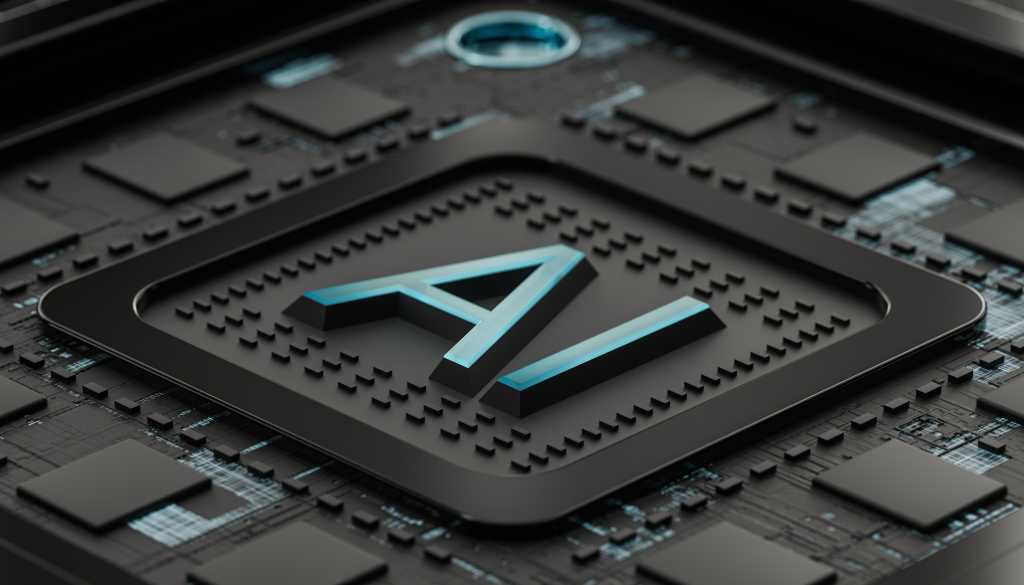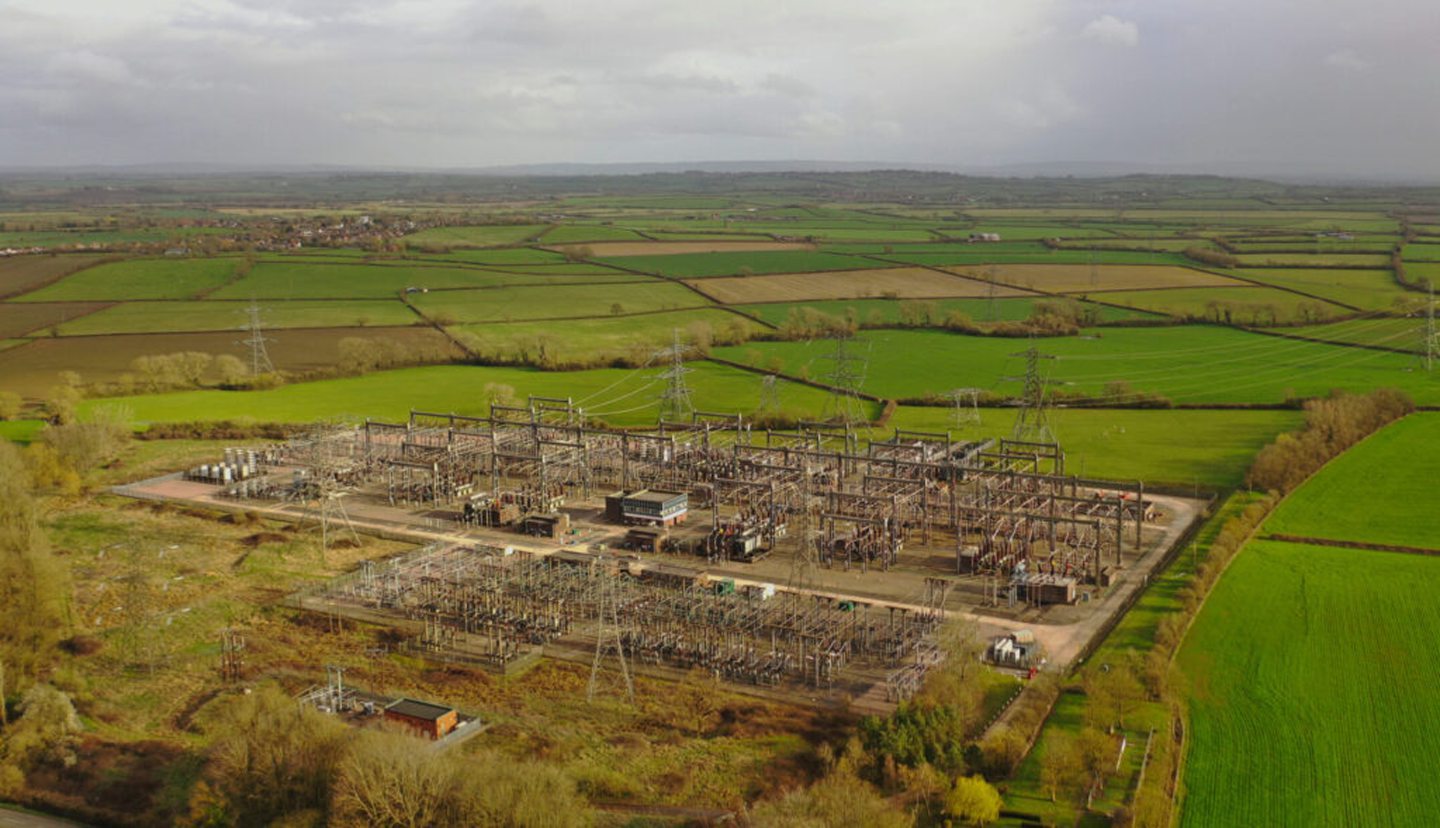Join our daily and weekly newsletters for the latest updates and exclusive content on industry-leading AI coverage. Learn More
Poe‘s latest usage report shows OpenAI and Google strengthening their positions in key AI categories while Anthropic loses ground and specialized reasoning capabilities emerge as a crucial competitive battleground.
According to data released today by Poe, a platform offering access to more than 100 AI models, significant market share shifts occurred across all major AI categories between January and May 2025. The data, drawn from Poe subscribers, provides rare visibility into actual user preferences beyond industry benchmarks.
“As a universal gateway to 100+ AI models, Poe has a unique view of usage trends across the ecosystem,” said Nick Huber, Poe’s AI Ecosystem Lead, in an exclusive interview with VentureBeat. “The most surprising things happening right now are rapid innovation (3x the number of releases Jan-May 2025 vs. the same period in 2024), an increasingly diverse competitive landscape, and reasoning models are the clear success story of early 2025.”
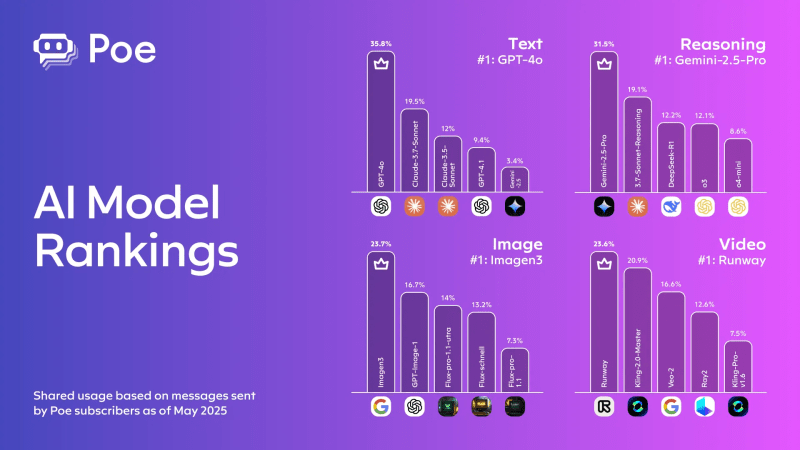
GPT-4o maintains dominance while new models quickly capture market share
In core text generation, OpenAI’s GPT-4o maintained its commanding position with 35.8% of message share, while the company’s newer GPT-4.1 family quickly captured 9.4% of usage within weeks of launch. Google’s Gemini 2.5 Pro similarly achieved approximately 5% message share shortly after its introduction.
These gains came largely at the expense of Anthropic’s Claude models, which saw a 10% absolute decline in share during the reporting period. The report notes that Claude 3.7 Sonnet has now substantially replaced the earlier Claude 3.5 Sonnet in user preference, though the latter still maintains a notable 12% usage share.
DeepSeek, which experienced viral growth earlier this year, has seen its momentum slow as competitors have released their own affordable, verbose reasoning models. DeepSeek R1‘s message share declined from a peak of 7% in mid-February to 3% by the end of April.
Complex problem-solving capabilities become key differentiator in AI market
Perhaps the most significant trend identified in the report is the dramatic growth in specialized reasoning models, which have expanded from approximately 2% to 10% of all text messages sent on Poe since the beginning of 2025.
“Reasoning models, even in the early days, have demonstrated a remarkable ability to handle complex tasks with increased precision,” Huber told VentureBeat. “Early adopters are clearly finding value in this and are willing to take on the tradeoffs in cost and processing time for better outcomes.”
In this high-growth segment, Gemini 2.5 Pro has quickly established itself as a leader, capturing approximately 31% of reasoning model usage within just six weeks of launch. It now leads the category, ahead of Claude’s reasoning-specialized models.
OpenAI continues to innovate rapidly in this space, releasing multiple reasoning models (o1-pro, o3-mini, o3-mini-high, o3, and o4-mini) in the first four months of 2025 alone. The report indicates that Poe users quickly adopt OpenAI’s newest offerings, transitioning from older models like o1 to newer alternatives like o3.
The report also noted the emergence of hybrid reasoning models, such as Gemini 2.5 Flash Preview and Qwen 3, which can dynamically adjust their reasoning level within conversations. However, these models currently represent only about 1% of reasoning model usage.
Industry analysts suggest this shift toward specialized reasoning capabilities signals a maturing AI market where raw text generation is becoming commoditized, forcing providers to differentiate through higher-value capabilities that can command premium pricing.
Google’s Imagen 3 challenges established players in visual AI arena
The image generation market appears increasingly competitive, with Google’s Imagen 3 family steadily growing from approximately 10% to 30% share during 2025, now rivaling category leader Black Forest Labs’ FLUX family of models, which collectively held about 35% share as of late April.
OpenAI’s GPT-Image-1, introduced to the API in late April, rapidly achieved 17% of image generation usage in just two weeks, mirroring its viral adoption in the ChatGPT app throughout March and early April.
The report indicates that FLUX models maintained their overall plurality share in image generation on Poe, but experienced a moderate decline from approximately 45% to 35% during the reporting period.
This three-way competition between Google, OpenAI, and Black Forest Labs marks a significant shift from early 2024, when Midjourney and Stable Diffusion variants dominated the space. The rapid improvement in image quality, adherence to prompts, and rendering speed has transformed this category into one of the most fiercely contested AI battlegrounds.
Enterprise adoption of image generation has accelerated substantially in the past six months, according to supplementary industry data, with marketing departments and creative agencies increasingly integrating these tools into their production workflows.
Chinese upstart Kling disrupts video AI market, challenging Runway’s early lead
In video generation, Chinese lab Kuaishou’s newly released Kling family of models has quickly disrupted the market, collectively capturing about 30% usage share. Most notably, Kling-2.0-Master attained 21% of all video generation on Poe by the end of April, just three weeks after its release.
Google’s Veo 2 maintained a strong position with approximately 20% share following its February launch, while category pioneer Runway saw its usage share decline substantially from about 60% to 20% throughout the reporting period.
The speed of Kling’s market penetration highlights how quickly the competitive landscape can shift in emerging AI categories, where established players may not maintain their early advantages as newcomers rapidly iterate and improve.
Video generation remains the most computationally intensive consumer-facing AI application, with models requiring significant processing power to create even short clips. This has kept usage more limited than text or image generation, but rapidly falling costs and improving quality are expected to drive broader adoption through 2025.
Early enterprise adopters include advertising agencies, social media content creators, and educational platforms that have begun integrating AI-generated video into their content strategies despite the technology’s current limitations.
ElevenLabs dominates voice AI while new entrants target specialized use cases
ElevenLabs continues to lead the audio generation category, fulfilling approximately 80% of all subscribers’ text-to-speech requests during the reporting period. However, the report highlights emerging competition from newcomers Cartesia, Unreal Speech, PlayAI, and Orpheus, which offer differentiated voice options, effects, and pricing models.
This market dominance by a single player stands in stark contrast to the more fragmented competition in other AI categories. Industry experts attribute ElevenLabs’ continued leadership to its early market entry, extensive voice library, and consistent quality improvements that have maintained a technical edge over competitors.
Newer entrants are finding success by targeting specific market niches. Unreal Speech has gained traction with podcast producers and audiobook publishers by offering specialized voice actors and emotional range capabilities. Meanwhile, Cartesia has focused on multilingual voices with authentic accents, capturing interest from global enterprises and educational platforms.
The audio AI market is projected to grow substantially through 2025 as text-to-speech capabilities approach human-like quality and find applications in customer service, accessibility solutions, and content creation. The relatively low computational requirements compared to video generation allow for wider deployment and experimentation.
Strategic Implications for Businesses Navigating a Constantly Shifting AI Landscape
The dynamic nature of the AI model landscape presents both opportunities and challenges for businesses integrating these technologies.
“It can be challenging to keep up with the latest in AI and the pace is only gaining speed,” Huber told VentureBeat. “If you’re a business already running AI at scale, investing in robust, provider-agnostic evaluation pipelines is critical because the model that’s best this month may be second-best next month.”
This volatility in model preferences underscores the value of platforms like Poe that offer access to multiple models through a single interface, allowing users to compare outputs and adapt to the changing AI ecosystem.
Industry analysts suggest that the growing importance of reasoning capabilities may signal a shift in how businesses evaluate and deploy AI models, with an increasing focus on precision and reliability for complex tasks rather than just speed or cost efficiency.
As frontier labs continue to release more capable models at an accelerating pace, businesses face difficult decisions about when to standardize on specific platforms versus maintaining flexibility. Many enterprise AI leaders are adopting a portfolio approach, using different models for different tasks while maintaining the ability to switch providers as capabilities evolve.
“This is going to be an important space to watch, especially among frontier providers as it represents the best of what AI can currently accomplish,” Huber noted regarding reasoning models.
The report indicates that multimedia capabilities are also becoming increasingly competitive, suggesting that text generation, long the primary focus of AI development, may be giving way to a more balanced ecosystem where image, video, and audio generation play equally important roles.
Businesses that successfully navigate this complex landscape will likely be those that maintain evaluation frameworks focused on specific use cases rather than chasing the latest model releases, while simultaneously building technical infrastructure that allows for rapid adoption when meaningful improvements emerge.
As AI models continue their game of musical chairs atop the rankings, one thing becomes clear: in today’s market, the crown rarely stays on the same head for long — and companies betting their future on yesterday’s AI champion may find themselves aligned with tomorrow’s also-ran.
Daily insights on business use cases with VB Daily
If you want to impress your boss, VB Daily has you covered. We give you the inside scoop on what companies are doing with generative AI, from regulatory shifts to practical deployments, so you can share insights for maximum ROI.
Read our Privacy Policy
Thanks for subscribing. Check out more VB newsletters here.
An error occured.


